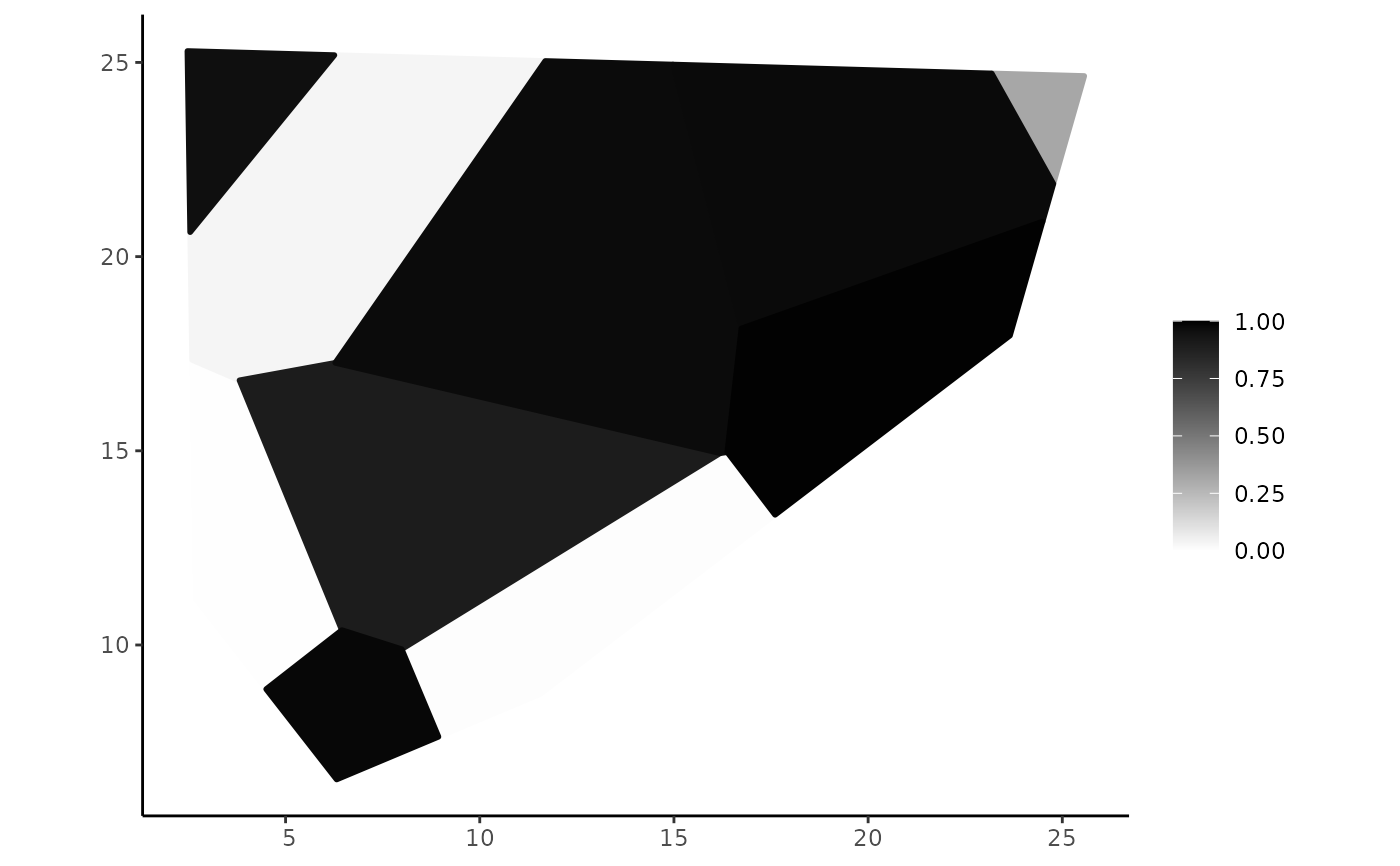Set a new classification for fuzzy topological relationships
Source:R/fuzzy_topological_relations.R
spa_set_classification.Rdspa_set_classification() configures a new set of linguistic values and corresponding membership functions to be used by fuzzy topological relationships.
Arguments
- classes
A character vector containing linguistic values that characterizes different situations of fuzzy topological relationships.
- mfs
A vector of membership functions with domain in [0, 1].
Details
The spa_set_classification() function replaces the default linguistic values employed by fuzzy topological relationships.
Each membership function i of the parameter mfs represents the class i of the parameter classes.
The length of these parameters must to be equal.
References
Underlying concepts and formal definitions of spatial plateau topological relationships and fuzzy topological relationships are respectively introduced in:
Examples
# \dontrun{
library(tibble)
library(sf)
set.seed(456)
# Generating some random points to create pgeometry objects by using spa_creator()
tbl = tibble(x = runif(10, min= 0, max = 30),
y = runif(10, min = 0, max = 30),
z = runif(10, min = 0, max = 50))
# Getting the convex hull on the points to clip plateau region objects during their constructions
pts <- st_as_sf(tbl, coords = c(1, 2))
ch <- st_convex_hull(do.call(c, st_geometry(pts)))
pregions <- spa_creator(tbl, base_poly = ch, fuzz_policy = "fcp", k = 2)
plot(pregions$pgeometry[[1]])
 plot(pregions$pgeometry[[2]])
plot(pregions$pgeometry[[2]])
 # Showing results for spa_overlap() by considering default list of classes
spa_overlap(pregions$pgeometry[[1]], pregions$pgeometry[[2]], ret = "list")
#> $superficially
#> [1] 0.1976317
#>
#> $moderately
#> [1] 0
#>
#> $completely
#> [1] 0
#>
# }
# Changing the default classification
trap_mf <- function(a, b, c, d) {
function(x) {
pmax(pmin((x - a)/(b - a), 1, (d - x)/(d - c), na.rm = TRUE), 0)
}
}
classes <- c("superficially", "moderately", "completely")
superficially <- trap_mf(0, 0.2, 0.4, 0.6)
moderately <- trap_mf(0.4, 0.6, 0.8, 1)
completely <- trap_mf(0.6, 0.8, 1, 1)
spa_set_classification(classes, c(superficially, moderately, completely))
# \dontrun{
# Now the fuzzy topological relationships will use the new classification
spa_overlap(pregions$pgeometry[[1]], pregions$pgeometry[[2]], ret = "list")
#> $superficially
#> [1] 0.1976317
#>
#> $moderately
#> [1] 0
#>
#> $completely
#> [1] 0
#>
# }
# Showing results for spa_overlap() by considering default list of classes
spa_overlap(pregions$pgeometry[[1]], pregions$pgeometry[[2]], ret = "list")
#> $superficially
#> [1] 0.1976317
#>
#> $moderately
#> [1] 0
#>
#> $completely
#> [1] 0
#>
# }
# Changing the default classification
trap_mf <- function(a, b, c, d) {
function(x) {
pmax(pmin((x - a)/(b - a), 1, (d - x)/(d - c), na.rm = TRUE), 0)
}
}
classes <- c("superficially", "moderately", "completely")
superficially <- trap_mf(0, 0.2, 0.4, 0.6)
moderately <- trap_mf(0.4, 0.6, 0.8, 1)
completely <- trap_mf(0.6, 0.8, 1, 1)
spa_set_classification(classes, c(superficially, moderately, completely))
# \dontrun{
# Now the fuzzy topological relationships will use the new classification
spa_overlap(pregions$pgeometry[[1]], pregions$pgeometry[[2]], ret = "list")
#> $superficially
#> [1] 0.1976317
#>
#> $moderately
#> [1] 0
#>
#> $completely
#> [1] 0
#>
# }